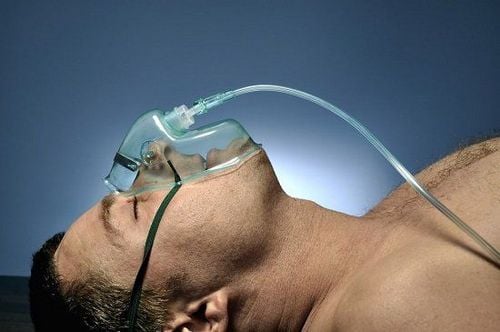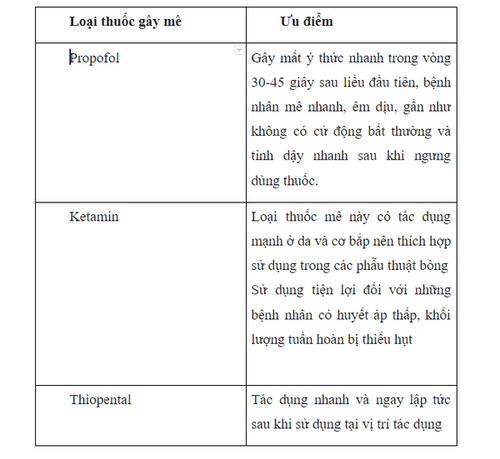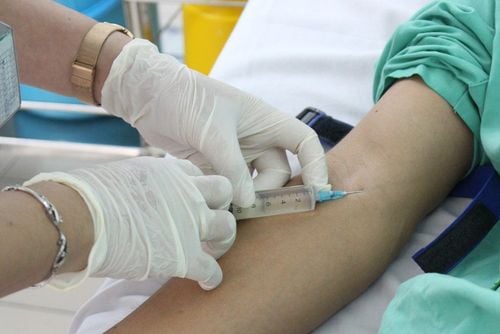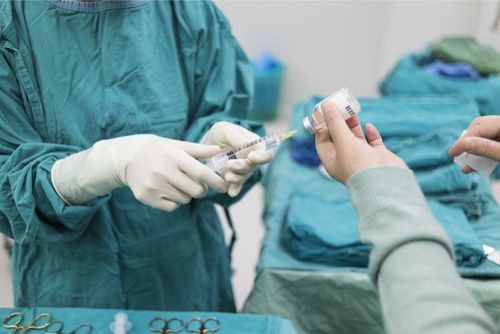This is an automatically translated article.
General intravenous anesthesia was born after inhalation anesthesia but has many advantages and is used in many types of surgery. Intravenous anesthetics are commonly used such as ketamine, propofol, barbituric...
1. What is General Intravenous Anesthesia?
Intravenous Anesthesia is a way of general anesthesia of the patient through the use of anesthetics, sleeping pills or sedatives injected through a vein or muscle. Intravenous anesthesia produces clinically reversible anesthesia, with the patient's breath free of anesthetic vapors.
Intravenous anesthesia includes anesthesia alone using only one type of anesthetic and combined anesthesia ie using a combination of anesthetic and analgesic or two types of anesthetic together.
Intravenous anesthesia includes methods such as ANS, APP, ketamine or propofol alone, TIVA. In which, TIVA mode, also known as total intravenous anesthesia, is the most complete anesthetic method, which synthesizes most of the advantages of the above methods as well as further studies on pharmacokinetics, this is also the most complete method of anesthesia. The most commonly used method in clinical practice today.
The ideal requirements of intravenous anesthetics include rapid induction of anesthesia, no associated adverse effects, especially for the respiratory and circulatory systems, strong analgesic effects, rapid recovery after discontinuation, and minimal anaesthesia. uncomfortable for the patient, does not release histamine, reduces intracranial pressure, does not irritate the surrounding tissues, dissolves and can be kept for a long time after mixing. However, in practice, there is currently no intravenous anesthetic that meets all of the above requirements. Therefore, intravenous general anesthesia is preferred for most indications of anesthesia.

Gây mê tĩnh mạch là cách gây mê toàn thân bệnh nhân thông qua sử dụng thuốc mê
2. Indications and contraindications of intravenous anesthetics
Intravenous anesthesia is indicated in the following cases:
Short or moderate surgery time; Surgery does not require muscle relaxation; The patient's respiratory and circulatory status is stable; Outpatient, extra-abdominal and thoracic surgeries; Intravenous anesthesia is contraindicated in the following cases:
Surgery requiring muscle relaxation; Craniocerebral, thoracic, abdominal surgery; Patients with unstable respiratory and circulatory status; Patients with liver failure, kidney failure; Do not use in large-scale or prolonged surgery; The patient is allergic to the anesthetic being used; There are no facilities for CPR; The intravenous line is uncertain; The surgeon performing the anesthesia is inexperienced.

Gây mê tĩnh mạch chống chỉ định trong các trường hợp bệnh nhân có tình trạng hô hấp, tuần hoàn không ổn định
3. Some Intravenous Anesthesia and Their Advantages
General advantages of general intravenous anesthetic include:
Medical staff when performing anesthesia for patients do not have to inhale toxic anesthetic gases; There is no need to use many devices, means or support tools like other anesthetic methods, which also minimizes the risk of fire and explosion; Do not pollute the environment ; Advantages of each type of general intravenous anesthetic:

Vinmec International General Hospital is one of the hospitals that strictly applies safe surgical anesthesia practice standards according to international guidelines. Vinmec has a team of experienced anesthesiologists and nurses, modern equipment such as: nerve detectors, ultrasound machines, Karl Storz difficult airway control system, comprehensive anesthesia monitoring system GE's AoA (Adequate of Anesthesia) including monitoring of anesthesia, pain and muscle relaxation will provide high quality and safety, helping patients to have adequate anesthesia, not awake, no residual muscle relaxant after surgery.
Vinmec Health System is also proud to be the first hospital in Vietnam to sign with the World Anesthesiology Association (WFSA) towards the goal of becoming the safest hospital for surgical anesthesia in Southeast Asia.
Please dial HOTLINE for more information or register for an appointment HERE. Download MyVinmec app to make appointments faster and to manage your bookings easily.













